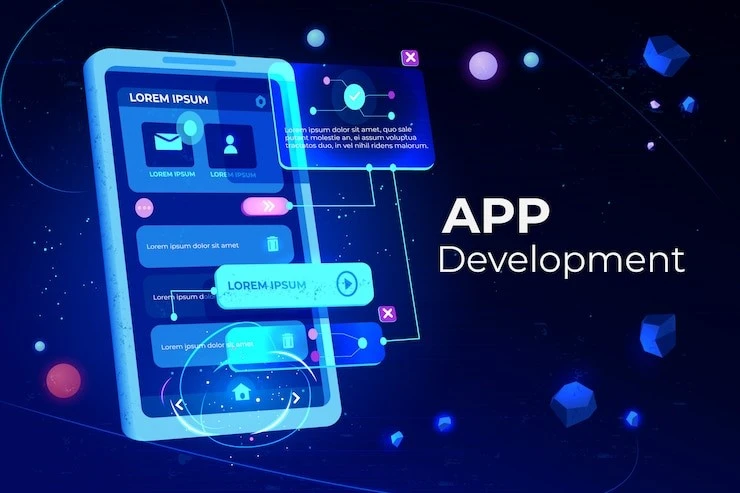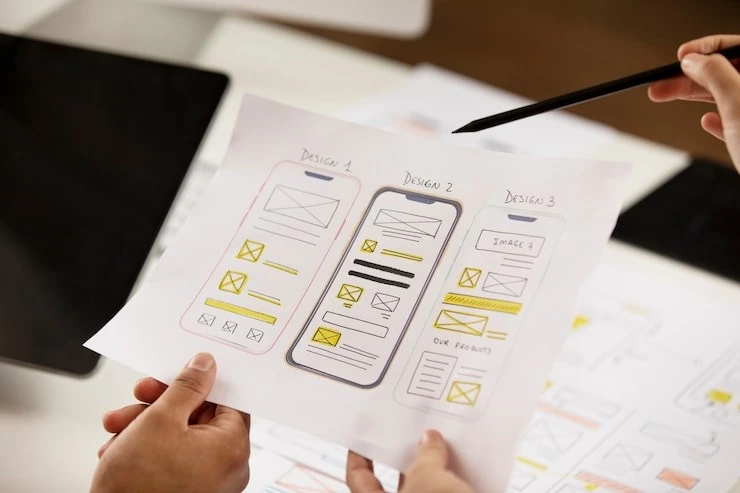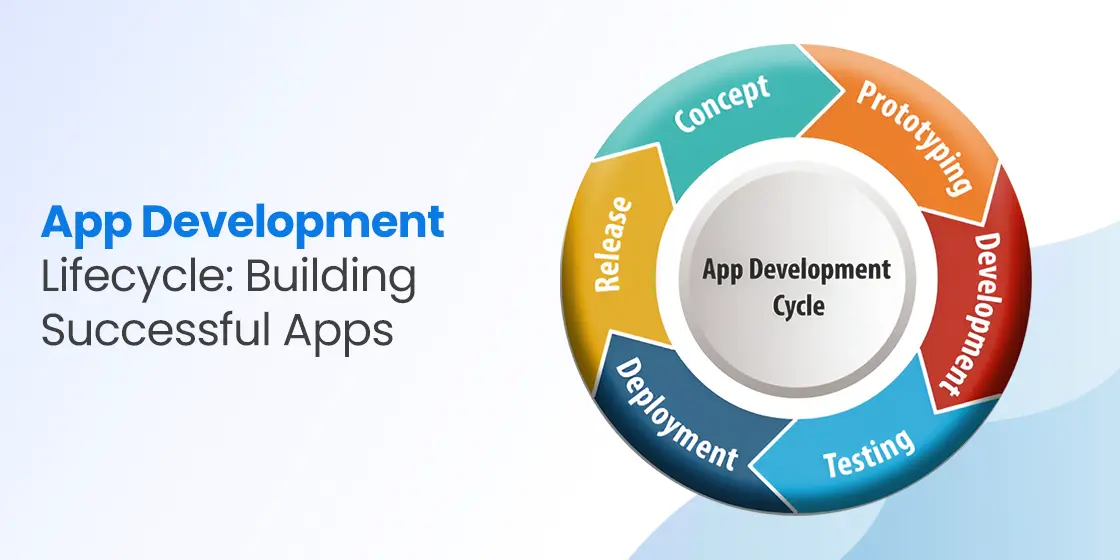Table of Content
The digital landscape has transformed dramatically, with mobile app downloads expected to reach 270 billion by 2025 and a projected market volume of US$781 billion by 2029. However, navigating this competitive environment requires more than just a brilliant idea. Understanding the app development lifecycle becomes crucial for creating applications that not only function flawlessly but also capture and retain users in an increasingly saturated market.
The app development lifecycle represents a structured approach that guides development teams from initial concept to final deployment and ongoing maintenance. This well-structured set of steps outlines app planning, creation, testing, deploying, and maintenance.
Taken from expert mobile app development services, it will help developers complete application development stages effectively, at the lowest cost, and in the shortest time possible, to produce high-quality apps. Think of it as your roadmap to success, ensuring every crucial element receives proper attention while minimizing costly mistakes that could derail your project.
What is the App Development Lifecycle?

The application development lifecycle serves as a comprehensive framework that encompasses every stage of creating, deploying, and maintaining software applications. The mobile app development lifecycle typically involves multiple stages, including planning, wireframing, feasibility assessment, prototyping, design, development, testing, deployment, and maintenance. This systematic approach ensures that development teams can create high-quality, scalable applications while managing resources efficiently.
Unlike traditional software development, the mobile app development process must consider unique factors such as device compatibility, user interface optimization for smaller screens, and platform-specific requirements. The mobile app development lifecycle consists of six main stages: planning, design, development, testing, deployment, and maintenance, with each stage requiring careful planning and execution. This structured methodology helps teams avoid common pitfalls while delivering applications that meet both user expectations and business objectives.
The application lifecycle management approach differs significantly from ad-hoc development methods. It provides clear milestones, defined deliverables, and measurable outcomes at each phase, ensuring that all stakeholders remain aligned throughout the development process. let’s take a look at it in detail to see how to outsource mobile app development or build it internally, successfully.
Phase 1: Planning and Requirements Analysis
The foundation of any successful application begins with thorough planning and requirements analysis. Successful apps – like successful businesses in general – solve a genuine problem for customers, making it essential to define the value proposition by bringing your app idea to life and assessing its feasibility. This initial phase involves identifying your target audience, conducting market research, and clearly defining the problem your application will solve.
During this stage, development teams must ask critical questions about their application’s purpose and viability. Important considerations include whether similar apps currently exist on the market, how this software differs from others, and what value the app provides to its users. Market analysis becomes essential for understanding competitor landscapes, identifying gaps in existing solutions, and determining your application’s unique selling proposition.
Requirements gathering involves creating detailed user personas, defining functional specifications, and establishing technical requirements. This stage is critical for evaluating the market, defining the app’s goal, and determining target customers through market analysis, target audience definition, and core feature identification. Proper planning at this stage prevents scope creep and ensures that development efforts remain focused on delivering genuine value to end users.
Phase 2: Design and User Experience
The design phase transforms your conceptual ideas into tangible visual representations that guide the development process. Following the planning stage, the next phase focuses on developing the app’s user interface (UI) and user experience (UX), with wireframing creating outline layouts and flows, prototyping enabling interactive testing, and UI/UX design focusing on visually beautiful and intuitive interfaces. This stage establishes the foundation for user interaction and overall application aesthetics.
Wireframing serves as the architectural blueprint for your application, outlining structural elements and navigation flows without getting distracted by visual details. Wireframes provide a visual blueprint that outlines the app’s structure, layout, and navigation flow. These low-fidelity representations help stakeholders visualize the application’s functionality while allowing for early feedback and iterations before committing to high-fidelity designs.
Prototyping brings wireframes to life through interactive mockups that simulate user interactions and validate design concepts. This iterative process allows teams to test user flows, identify potential usability issues, and refine the user experience before development begins. User testing during the prototype phase provides valuable insights that can significantly improve the final product’s usability and adoption rates.
Phase 3: Development and Implementation
The development phase represents the most resource-intensive stage of the app development lifecycle, where theoretical designs transform into functional code. The development stage is where the actual coding occurs, separated into front-end and back-end development, where the app is constructed and integrated with essential services. This phase requires careful coordination between multiple development streams to ensure seamless integration and optimal performance.
Front-end development focuses on creating the user-facing components that directly interact with your application’s users. Front-end development involves client-side development, creating a presentation layer of the software for direct user interaction. This includes implementing the user interface designs, ensuring responsive layouts across different screen sizes, and optimizing performance for smooth user interactions. Front-end developers must pay careful attention to accessibility standards and platform-specific guidelines.
Back-end development handles the server-side logic, database management, and API integrations that power your application’s functionality. Back-end development involves server/database development, connecting the front-end part of the mobile app with the data access layer. This includes implementing business logic, managing data storage and retrieval, ensuring security protocols, and establishing reliable communication channels between different system components.
Phase 4: Testing and Quality Assurance
Comprehensive testing ensures that your application functions correctly across different devices, operating systems, and usage scenarios. In agile development, it’s usually a continuous process following every sprint of development, including compatibility testing, interface testing, device compatibility testing, low-level resources testing, security testing, and beta testing. This systematic approach to quality assurance helps identify and resolve issues before they reach end users.
Testing encompasses multiple dimensions that address different aspects of application functionality and performance. Device compatibility testing ensures your application works correctly across various screen sizes, operating systems, and hardware configurations. Interface testing validates that navigation elements, buttons, and user interactions function as intended, while security testing protects user data and prevents unauthorized access.
Performance testing examines how your application behaves under different conditions, including low battery situations, slow internet connections, and high user loads. Once the testing is done, and the product is ready for deployment, it is released for customers to use, with the deployment complexity determined by the project size. Beta testing provides real-world feedback from actual users, helping identify issues that may not surface during controlled testing environments.
Phase 5: Deployment and Launch
The deployment phase marks the transition from development environment to live production, making your application available to end users. This involves publishing the app and following updated versions to a chosen app store, along with infrastructure support for admin panels or cloud services. Successful deployment requires careful coordination between development teams, operations personnel, and marketing departments to ensure smooth launch execution.
App store submission involves meeting specific platform requirements, preparing marketing materials, and navigating approval processes. Each platform maintains distinct guidelines regarding content policies, technical specifications, and monetization models. Preparation for this phase should begin early in the development process to avoid delays during the critical launch window.
Infrastructure considerations become crucial during deployment, particularly for applications that rely on backend services or cloud-based resources. Teams must ensure that server capacity can handle anticipated user loads while maintaining acceptable performance levels. Monitoring systems should be in place to track application performance and quickly identify any issues that arise during the initial launch period.
Phase 6: Maintenance and Continuous Improvement
The application development lifecycle doesn’t conclude with deployment; instead, it transitions into an ongoing maintenance phase that ensures long-term success. Mobile app development doesn’t end with the launch, as the mobile application development lifecycle is a continuous endeavor involving fixing bugs, responding to feedback, adjusting infrastructure, and adapting to changes in technology and app store requirements. This phase requires sustained attention and resources to maintain application relevance and functionality.
Maintenance activities encompass bug fixes, security updates, performance optimizations, and feature enhancements based on user feedback and changing market conditions. Regular updates are vital for app maintenance, including fixing bugs, adding new features, and improving speed, with developers planning updates based on user feedback and new tech trends. Security remains a critical concern, as new vulnerabilities emerge and require prompt attention to protect user data and maintain trust.
User feedback analysis provides valuable insights for future development cycles and feature prioritization. As users interact with the app, they provide valuable feedback that enables developers to update features and improve user satisfaction and retention. This continuous improvement approach helps applications evolve with user needs while maintaining competitive advantage in dynamic market conditions.
Common Development Methodologies

Different application development lifecycle methodologies and mobile app development frameworks offer varying approaches to managing the development process, each with distinct advantages depending on project requirements and team dynamics. Common models include Waterfall, Agile, V-Shaped, and Iterative models, with each arranging SDLC phases in varying chronological order to optimize the development cycle. Understanding these methodologies helps teams select the most appropriate approach for their specific circumstances.
The Waterfall methodology follows a linear progression where each phase must be completed before the next begins. The waterfall model is the oldest of all SDLC methodologies, requiring development teams to finish one phase completely before moving on to the next, with each stage having a separate project plan. This approach works well for projects with clearly defined requirements and minimal expected changes throughout the development process.
Agile methodologies emphasize flexibility, iterative development, and continuous stakeholder feedback. The agile methodology prioritizes fast and ongoing release cycles, utilizing small but incremental changes between releases, resulting in more iterations and many more tests compared to other models. This approach proves particularly effective for complex applications where requirements may evolve based on user feedback and market insights.
Tools and Technologies

Selecting appropriate tools and technologies as well as the best coding languages for app development significantly impacts the efficiency and success of your app development lifecycle. Modern development environments offer integrated platforms that support multiple phases of the development process, from initial planning through deployment and maintenance. When your team uses the same toolset across the application development life cycle, it provides a common language that simplifies defect identification and resolution.
Development tools should align with your chosen methodology while supporting collaboration between different team members and stakeholders. Version control systems enable multiple developers to work simultaneously while maintaining code integrity and enabling rollback capabilities when issues arise. Automated testing frameworks reduce manual testing overhead while ensuring consistent quality assurance throughout the development process.
Project management platforms help coordinate activities across different phases of the application development lifecycle, providing visibility into progress and enabling effective resource allocation. Integration between development tools, testing platforms, and deployment systems creates seamless workflows that reduce manual handoffs and potential error introduction points.
FAQs
| How long does the app development lifecycle typically take? The complete app development lifecycle usually takes 3-9 months, depending on app complexity, features, and team size. Simple apps with basic functionality may complete the cycle in 3-4 months, while complex applications with advanced features can take 6-9 months or longer. The planning and design phases typically require 2-4 weeks each, development takes 2-6 months, testing needs 2-4 weeks, and deployment occurs within 1-2 weeks. Remember that maintenance is ongoing throughout the app’s lifetime. |
| What’s the difference between app development lifecycle and software development lifecycle? While both follow similar structured approaches, the app development lifecycle specifically addresses mobile application requirements like device compatibility, platform-specific guidelines, app store submission processes, and mobile user experience optimization. The software development lifecycle covers broader software development including desktop applications, web systems, and enterprise software. Mobile app development must consider factors like battery optimization, offline functionality, and touch-based interfaces that aren’t relevant in traditional software development. |
| Which development methodology works best for mobile apps? Agile methodology is generally most effective for mobile app development due to its flexibility and iterative approach. The mobile market evolves rapidly, and user feedback during development helps create better applications. Agile allows teams to adapt to changing requirements, incorporate user testing results, and release minimum viable products quickly. However, smaller projects with well-defined requirements might benefit from waterfall methodology, while complex applications with high-risk elements could use iterative or spiral models. |
| How much does it cost to complete the full app development lifecycle? App development costs vary significantly based on complexity, features, team location, and platform choice. Simple apps typically cost $10,000-$50,000, medium complexity apps range from $50,000-$150,000, and complex applications can cost $150,000-$500,000 or more. Costs include all lifecycle phases: planning and design (10-15%), development (60-70%), testing (15-20%), deployment (5%), and ongoing maintenance (15-20% annually). Additional expenses include app store fees, third-party services, and marketing costs. |
| What happens if I skip phases in the app development lifecycle? Skipping phases in the app development lifecycle significantly increases project risks and costs. Inadequate planning leads to scope creep and budget overruns. Insufficient design results in poor user experience and high abandonment rates. Rushed development creates technical debt and security vulnerabilities. Skipping thorough testing leads to buggy releases that damage user trust and require expensive post-launch fixes. Each phase builds upon previous work, so shortcuts typically result in rework, delays, and ultimately higher costs than following the complete lifecycle properly. |
Conclusion
The app development lifecycle provides a structured framework for transforming innovative ideas into successful applications that deliver genuine value to users. The mobile app development lifecycle is an ongoing cycle of evaluation, improvement, and adaptation, with continuous assessment crucial for identifying areas needing enhancement in response to user feedback, market trends, or technological developments. Success in today’s competitive marketplace requires careful attention to each phase while maintaining flexibility to adapt to changing requirements and user feedback.
Understanding and implementing a comprehensive application development lifecycle approach enables teams to create applications that not only meet initial requirements but also evolve to address emerging user needs and market opportunities. The structured methodology helps minimize risks, optimize resource utilization, and deliver applications that stand out in increasingly crowded app marketplaces.
Ready to transform your app idea into a successful application? Start by clearly defining your target audience and the specific problem your app will solve. Remember that the app development lifecycle is not just a one-time process but an ongoing journey of continuous improvement and adaptation. Contact our development team today to learn how we can help you navigate each phase of the application development lifecycle and bring your vision to life with confidence and expertise.

Empower your digital journey with StruqtIO - Your dedicated partner for cutting-edge custom software development, innovation, and digital transformative solutions. Harness the power of technology to elevate your business and redefine your digital landscape today.


